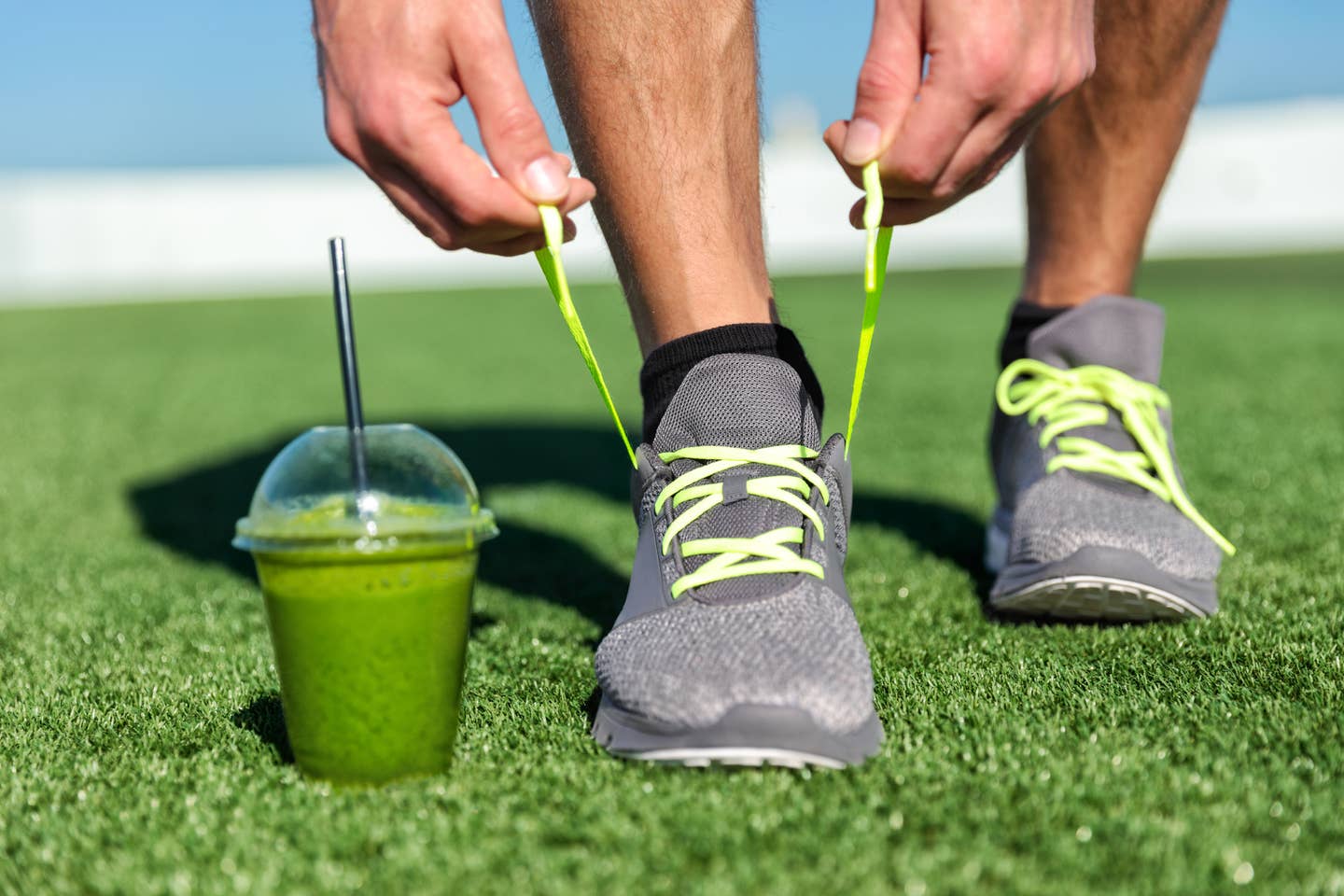
Eat Like An Athlete: Five Tips for Plant-Based Performance from a Sports Doc
We are all athletes. We may not all be training for Ironman triathlons or attempting to win a Superbowl as a starting QB at the age of 43, but we are trying to get the best performance from our bodies for the longest amount of time possible. We, too, want the best recovery after a workout, or the quickest healing process if we get injured, even if that injury occurred during a competitive game of Sunday doubles. We may not be getting sacked at the 30-yard line, but we still want to be able to jog and bike and hang with our sporty friends or run with or after our kids.
So why wouldn’t we eat like an athlete? Dr. James Loomis, the featured sports medicine expert in The Game Changers and the former doctor for the St. Louis Cardinals and the Rams, shares how to eat like an athlete to achieve your best performance on the field of life.
As an internist for the Rams and the Cardinals, Dr. Loomis has learned about the mindset of professional athletes and their relationship with food and nutrition. Athletes would copy the diet of their teammates and those diets usually consisted of lots of meat because often their strength and conditioning coaches would tell them they needed it. That's started to change since The Game Changers came out, and athletes are watching veterans like Tom Brady and Cam Newton both follow plant-based diets for the sake of longevity and injury recovery. Dr. Loomis emphasizes that at our core we are all athletes. “We all evolved to be athletes because we had to be able to perform physical activities to survive because we had to hunt and gather food or run away [from other animals].”
Here Are Dr. Loomis's 5 Best Tips to Eat Like an Athlete for Peak Performance
1. Be an Athlete: Eat Whole Foods Like Our Ancestors. Skip Processed Foods.
Dr. James Loomis: The key element of diet is we need to eat the foods we are designed to eat as human beings. We are designed to eat the same foods our ancestors have been eating for tens of thousands of years and our ancestors were athletes because they had to be to survive.
Although there’s no such thing as a Paleo diet, with a capital 'P' there were certainly ancestral dietary patterns and this was addressed in the movie, The Game Changers. Our ancestors were not hunter-gatherers like you have heard. We were gatherer-hunters in a temperate climate. What we gathered was unprocessed whole food plant-based sources of energy. It was roots and stems and leaves and seeds and fruits and nuts and vegetables and various legumes. I mean there were no White Flour Trees or Canola Oil Bushes or Dr. Pepper Nuts. All of these processed foods are not part of the optimal human diet.
2. Drop the Dairy: Cows Milk Is For Baby Cows
Dr. James Loomis: We hadn’t domesticated mammals until seven or eight thousand years ago, depending on the species. If you think about what milk is, it’s a biological fluid that is involved to facilitate a baby mammal turning into one big enough to find food on its own. Once we can do that, we don’t need our mother’s milk anymore and that’s why you don’t see human milk on the grocery store shelf. So the idea that we should be drinking another mammal’s milk that evolved to facilitate a 70-pound cow into a 150-pound cow doesn’t make sense. I think you can make an incredibly strong argument that a whole food plant-based diet is the optimal diet for human health, planetary health, and athletic performance.
3. Eat The Colors of the Rainbow to Lower Inflammation and Repair Cells
Dr. James Loomis: The reason that a whole food plant-based diet is not only important for our health but our athletic performance centers around inflammation. So, if you look at the standard American diet, it is highly inflammatory. And that’s driven by the saturated fat that you find in meat and dairy, which has a very high Omega 6 content, which is inflammatory, and a very low Omega 3 content which is anti-inflammatory, and we don’t get a lot of antioxidants.
When we exercise, we burn oxygen and create what are called oxygen-free radicals. These oxygen free radicals in small doses play an important cell-signaling mechanism. For example, when you start to exercise your oxygen consumption goes up, your oxidative stress goes up and that sends a signal to your muscles, that says: ‘Hey I’m getting ready to damage you, so get ready to fix me when we're done.’
We have a very limited inherent ability to mitigate oxidative stress. Any extra antioxidant [needed to repair the oxidative stress of working out] has to come from our food and the only place you see antioxidants is in plants. And, in general, the more color the plant has, the more antioxidants it has.
4. Eat Like a Plant-based Athlete to Recover Like a Plant-based Athlete
What I’ve found talking to every single athlete that I’ve met through The Game Changers and every athlete that I’ve taken care of, whether professional athletes or amateur athletes, is that their ability to recover after hard workouts is phenomenal.
In my late fifties, when I was training for an Ironman, I’d go on these eighty, ninety-mile bike rides, get off my bike, run five miles, get up the next morning, run fifteen miles then go swim three miles and I never got sore. I never got stiff. It was astounding. [I'm plant-based.] And every single athlete says that after they transitioned to a plant-based diet their ability to recover [after hard workouts] went up exponentially. It’s because of the anti-inflammatory nature of a plant-based diet inherently has a much lower Omega 6 to Omega 3 ratio and plants are packed with these antioxidants, anti-inflammatory compounds that come from fruits and vegetables.
5. Get Your Protein from the Orignal Source: Plants
Elysabeth: Protein comes from plants and microbes. Animals eat plants and microbes and therefore they have protein, but animals do not make protein. Protein does not come from animals. All protein comes from plants.
Dr. James Loomis: That’s exactly right, and you know one of the biggest push backs that I hear, the biggest question I always get is ‘Where do you get your protein?’ My usual retort... is to say: Let me ask you a question: Do you turn on National Geographic and see a special on mountain goats or elephants and worry about where they get their protein? So why are you worried about Where I’m getting my protein? I get my protein in the same place they get theirs, because they are herbivores.
All that protein in a hamburger or steak... came from the plants that the cow ate. The cow just acts as the middleman. It has used up all the good stuff; all the fiber, all the antioxidants, all the minerals to run its own machinery, and it just leaves us with the protein and fat.
That’s why a whole food plant-based diet is so important. Plants have protein. A whole food plant-based diet has about 15% plant-based protein, which is plenty of protein to fuel an athlete.
Bottom line: "A whole food plant-based diet has about 15% plant-based protein, which is plenty of protein to fuel an athlete. So the key, if you’re athletic, is not more protein, it’s more calories,” says Dr. Loomis.
As for younger athletes in high school and college, Dr. Loomis recommends having their family watch The Game Changers and educate themselves. He also mentions that there are plenty of resources online to find healthy inexpensive recipes that are easy to follow for beginners. “There’s so much information out there, you’ve just got to find it and share it and educate yourself and empower yourself. That’s the most important thing," he adds.
For the full interview, click here.
Elysabeth Alfano is a plant-based expert for mainstream media, breaking down the plant-based health, food, culture, business, and environmental news. Follow her @elysabethalfano.
More From The Beet






